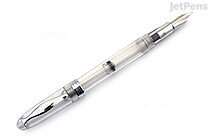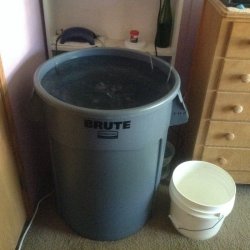In the pendant drop test, a drop of liquid is suspended from the end of a tube or by any surface by
surface tension. The force due to surface tension is proportional to the length of the boundary between the liquid and the tube, with the proportionality constant usually denoted {\displaystyle \gamma }
.
[2] Since the length of this boundary is the circumference of the tube, the force due to surface tension is given by
{\displaystyle \,F_{\gamma }=\pi d\gamma }
where
d is the tube diameter.
The mass
m of the drop hanging from the end of the tube can be found by equating the force due to gravity ({\displaystyle F_{g}=mg}
) with the component of the surface tension in the vertical direction ({\displaystyle F_{\gamma }\sin \alpha }
) giving the formula
{\displaystyle \,mg=\pi d\gamma \sin \alpha }
where α is the angle of contact with the tube's front surface, and
g is the acceleration due to gravity.
The limit of this formula, as α goes to 90°, gives the maximum weight of a pendant drop for a liquid with a given surface tension, {\displaystyle \gamma }
.
{\displaystyle \,mg=\pi d\gamma }
This relationship is the basis of a convenient method of measuring surface tension, commonly used in the petroleum industry. More sophisticated methods are available to take account of the developing shape of the pendant as the drop grows. These methods are used if the surface tension is unknown.
[3][4]

en.wikipedia.org

www.jetpens.com










